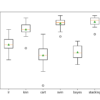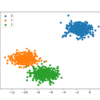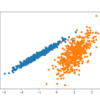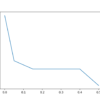Not all classification predictive models support multi-class classification. Algorithms such as the Perceptron, Logistic Regression, and Support Vector Machines were designed for binary classification and do not natively support classification tasks with more than two classes. One approach for using binary classification algorithms for multi-classification problems is to split the multi-class classification dataset into multiple […]










